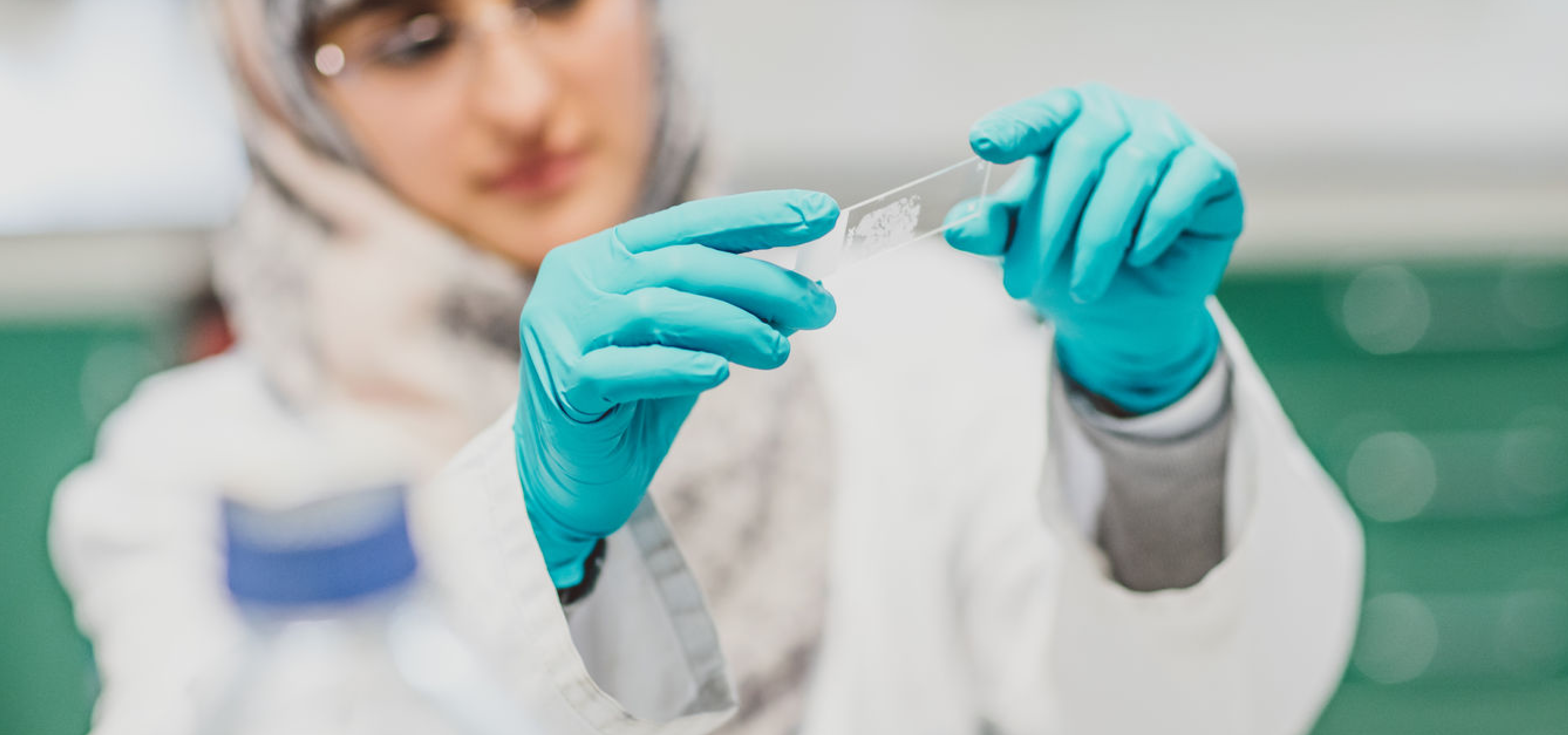
This module will introduce you to enterprise and entrepreneurship skills and how these can help shape your future careers. These may not be in the conventional career pathways envisaged by those undertaking a bioscience degree but they are expected to cover competencies representing a growing trend in new business creation. The module will draw on expertise from academics, career development experts, employers and entrepreneurs. Throughout the module, a strong emphasis will be placed on key skills such as communication, collaboration, networking, developing self-confidence and creativity, problem-solving and being pro-active and decisive.
Learning Outcomes
In order to pass this module students will have needed to demonstrate:
1. To be aware of career options for bioscience students and how science can be applied to a range of work environments and sectors;
2. To develop enterprise and entrepreneurial skills which can be applied by bioscience students;
3. To develop reflective employability criteria;
4. Competence in oral as well as written communication skills and group work;
Part A - i) Summer workshop on Employability for Bioscience graduates
ii) Communication and Public Engagement exercise
Part B - 'Hot Topics' essay and Employability exercise
Part C - Oral Presentation
- Module Supervisor: Jonathan Worrall
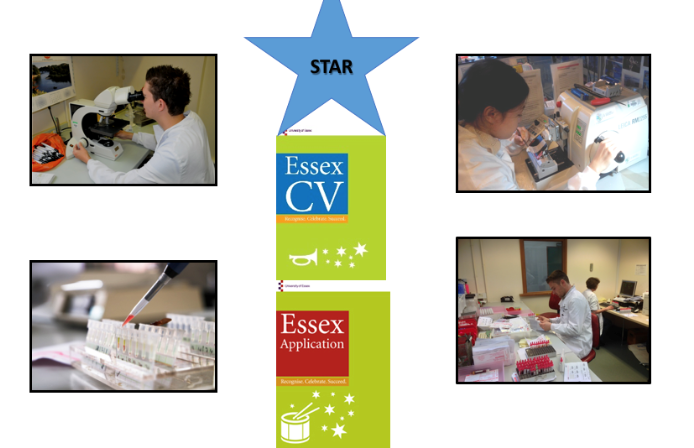
This module aims to introduce students to a hospital environment, as well as developing skills in Biomedical Science.
The module is a second year module; Part A, the Summer School, takes place after Year 1 Summer examinations.
The Summer School week at the University of Essex gives students an opportunity to have generic lectures and practical sessions. Students will have lectures and practical sessions in four major disciplines: Clinical Biochemistry, Cellular Pathology, Medical Microbiology and Haematology/Transfusion Science. These sessions will be delivered by the NHS staff as well as academics. This module also gives the opportunity to further develop practical and transferable skills.
Part B: Employability. Transferable skills and career planning are increasingly recognised as being of great importance to graduates. Students will develop skills and understanding of assembling CVs, completing application forms and preparing for interview. A range of internal and external expert speakers will run workshops and other activities. Students will be enabled to identify the skills required to meet their career goals through Professional Development Planning (PDP).
Learning Outcomes (including summer school, careers workshop and practicals).
To pass this module students will need to be able to:
1. Demonstrate practical and professional understanding of a range of Biomedical Science topics;
2. Show understanding of laboratory work associated with each of the four major BMS specialities: Clinical Biochemistry, Cellular Pathology, Medical Microbiology and Haematology/Transfusion Science;
3. Demonstrate engagement with Personal Development Planning (PDP);
4. Show competence and safe practice in laboratory work, including effective observations, measurements and accurate records;
5. Demonstrate skills in information retrieval, communication, data analysis and interpretation, numeracy, problem solving and team work.
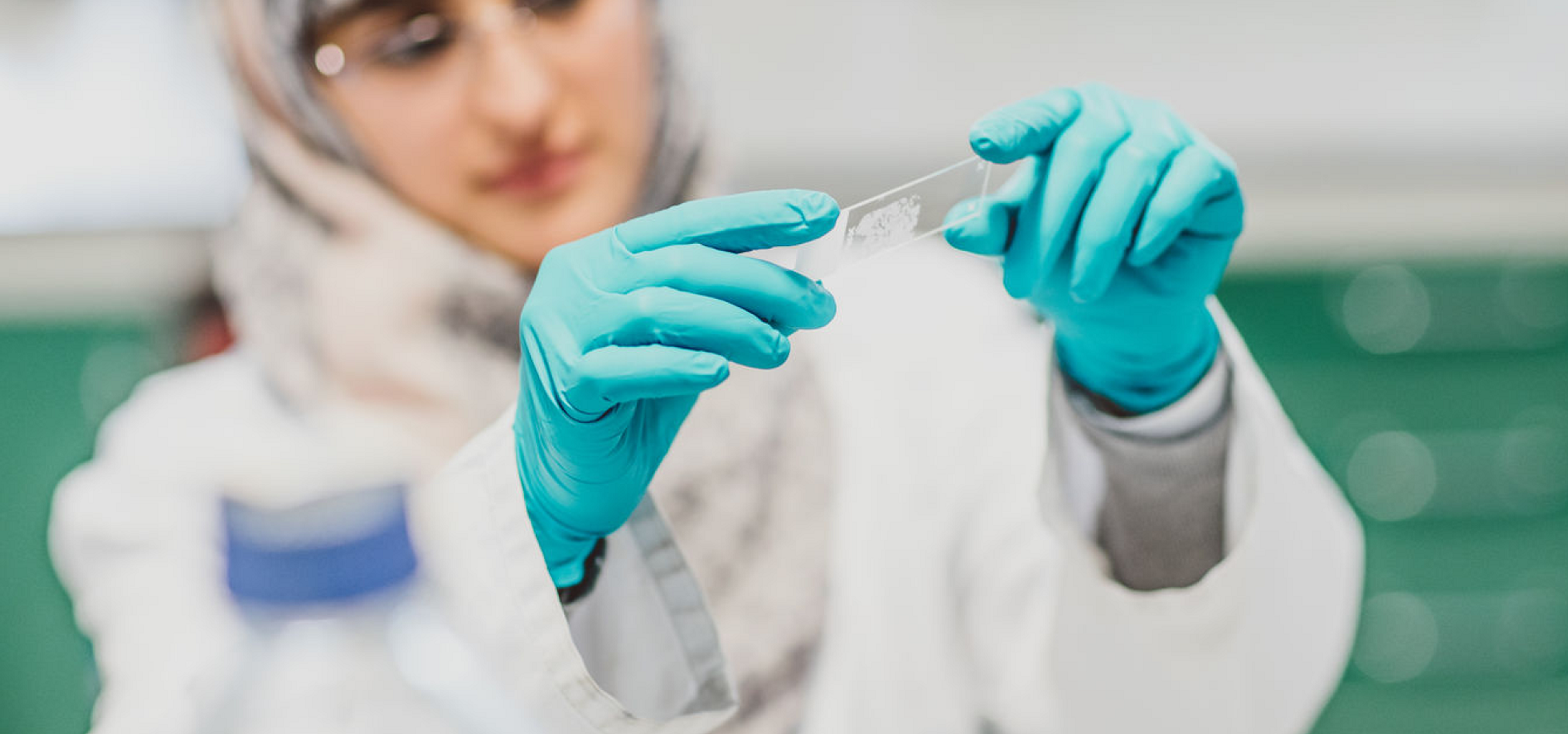
This module aims to provide an introduction to the field of human genetics from understanding the molecular basis of genetic disease, to the application of techniques for genome analysis in the clinical genetics laboratory. The inheritance of single gene diseases and more complex multifactorial disorders will be addressed. The types of abnormalities found in the human karyotype will be studied. The origins and types of defects observed, their effect at a molecular level and on the individuals and families affected will be considered. The impact of the human genome project, molecular diagnostic techniques and potential therapeutic options such as gene therapy will be considered.
Learning outcomes
At the end of this module students will be able to:
1. define the structure and organisation of the human genome and genes and explain modern methods used to study genome variation and expression;
2. explain the nature of single gene and complex genetic disease, including the mechanisms of disease and the inheritance patterns observed;
3. explain the mechanisms leading to abnormalities in the human karyotype, the resulting disorders and the molecular techniques used to study chromosomes;
4. valuate the different genetic screening tests, when they are applied and their application in genetic counselling;
5. demonstrate competence in information retrieval and data analysis and interpretation.
- Module Supervisor: Patrick Varga Weisz

Molecular biology is central to nearly all aspects of our knowledge of how biology "works" at a molecular level. This module explores the breadth of processes involved in the expression of eukaryote genes, including the latest techniques used in molecular biology with an emphasis on genetic engineering and the production of therapeutic proteins. The process of gene expression begins with the regulatory proteins that combine to assemble the transcriptional machinery at the promoter of a gene, followed by the processing and turnover of RNA transcripts. We move on to address the processes of protein synthesis, protein folding and the post-transcriptional modification of proteins. Throughout the module there will be an emphasis on the impact of disease on these processes and opportunity for treatment presented by applying an understanding of the molecular biology.
Learning Outcomes
To pass this module students will need to be able to:
1. describe the structural organisation of the gene and associated regulatory sequences;
2. explain the process of transcription and the regulation of gene expression;
3. describe how proteins are synthesized, targeted and degraded in cells;
4. understand a range of molecular biology techniques including PCR, cloning, mutagenesis and protein expression;
5. demonstrate competence in a) the analysis and interpretation of data, b) written communication c) practical DNA manipulation techniques.
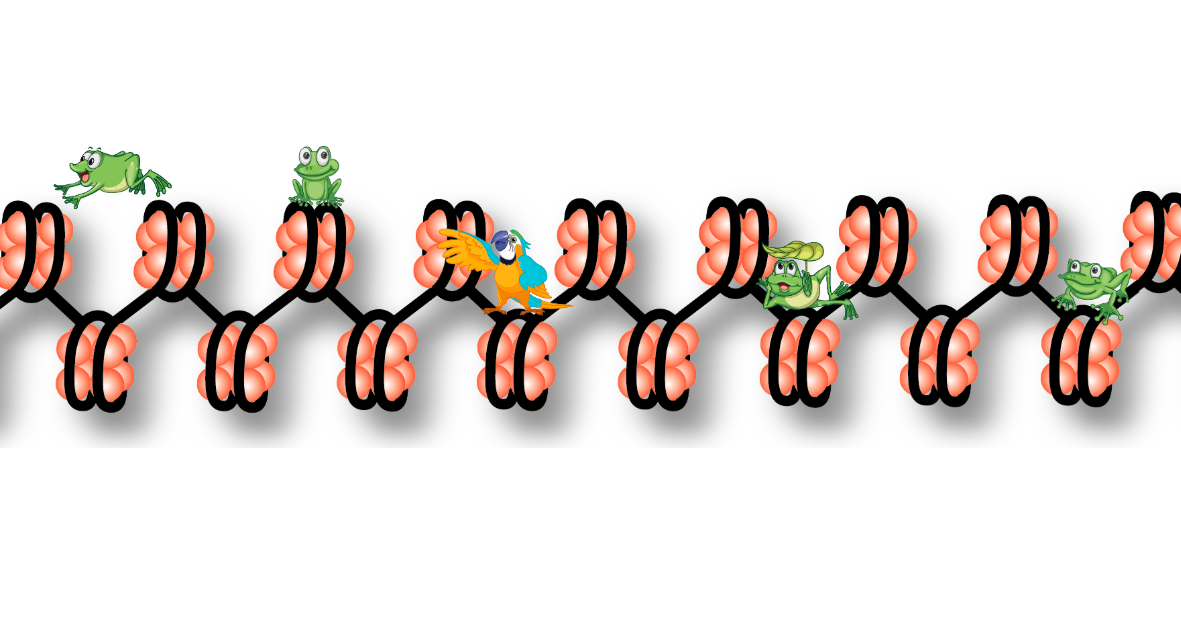
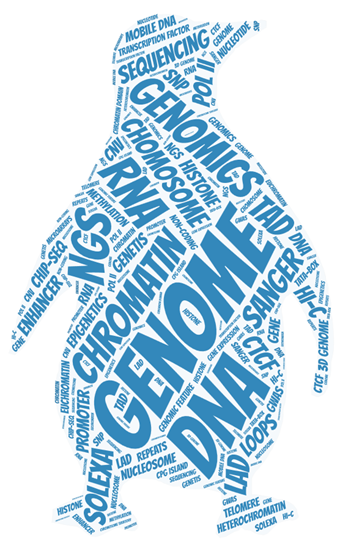 This module aims to give an overview of main approaches and concepts in the field of genome science. It presents genomics techniques for studying gene regulation at the whole genome level. The focus is on the eukaryotic genomes but the content is applicable to study any organisms. The course includes a wet lab and computer practical sessions on next-generation sequencing and its analysis.
This module aims to give an overview of main approaches and concepts in the field of genome science. It presents genomics techniques for studying gene regulation at the whole genome level. The focus is on the eukaryotic genomes but the content is applicable to study any organisms. The course includes a wet lab and computer practical sessions on next-generation sequencing and its analysis.
Learning Outcomes:
To pass this module, students will need to be able to:
1. Describe the techniques and approaches used to study genomes and genes;
2. Explain how Next Generation Sequencing (NGS) data is obtained and analysed;
3. Describe the organisation of eukaryotic genomes.;
4. Understand main principles of transcription regulation;
5. Explain how genomes and genes change and evolve;
6. Explain how molecular approaches are contributing to the diagnosis and treatment of disease;
7. Demonstrate competence in a) the analysis and interpretation of data, b) written communication, c) the use of DNA sequence analysis programs.
- Module Supervisor: Charalampos Rallis
- Module Supervisor: Leonard Schalkwyk
- Module Supervisor: Glyn Stanway
- Module Supervisor: Vladimir Teif

This module is designed to provide a thorough grounding in basic aspects of immunology. It also aims at familiarizing students with the complex language and nomenclature used by immunologists. The first part of the course will provide you with an introduction to innate (natural) and adaptive (specific) immunology. In the second part of the course, examples of immuno-pathology, such as auto-immunity, immuno-deficiencies and vaccines will be taught with special emphasis on human immunology. Selected clinical examples (e.g. allergy and transplantation) will be discussed. Case-studies (e.g. AIDS) will be used in the sections pertinent to immuno-pathology and clinical immunology. The course should provide the basis for understanding how the immune system works. BS223 provides the basic building blocks for those students planning to take BS326 (Molecular and Developmental Immunology) in the final year.
Learning outcomes:
To pass this module students will need to:
1. Provide an integrated overview of the principles of the immune system and describe the anatomical and structural basis of the human immune system.
2. Demonstrate an understanding of the molecular structure and mode of action of the major receptors and molecules of the immune system.
3. Show basic immunological mechanisms can help to understand immuno-dysfunction such as autoimmune diseases and immuno-deficiencies (e.g. AIDS).
4. Identify areas of immunology where current knowledge could lead to clinical intervention.
5. Show skills in information retrieval and data analysis and interpretation, coursework writing in the form of SPF and self-learning.
6. Demonstrate the ability to integrate material across different modules.
7. Be able to use immuno-assays and binding techniques such as cytometry for the analysis of the immune system.
8. Be able to identify the organs of the immune system and use of confocal microscopy to visualise immune receptors.

The study of cells is at the centre of modern biology. In this course we aim to integrate the molecular aspects of the control of cellular processes with the structural and dynamic aspects of cell organisation. We will review the roles of the major types of filament structures of the cytoskeleton involved in cellular and subcellular movements and in the determination of cell shape. An important topic in this course will be how cells communicate, i.e. by direct cell-cell interaction and by cell-cell signalling via small molecules and via peptides and proteins. The cytoplasmic signal transduction pathways in animal cells will be discussed. The regulation of cell reproduction and cell death is critical for the normal development of multicellular organisms and for tissue maintenance in the adult. Deregulation of these processes ultimately leads to cancer.
This course is designed to provide a core of knowledge central to an understanding of modern cell biology. It provides the background for some other second year courses and it is a prerequisite for a number of third year courses including Cancer Biology (BS349).
Learning outcomes:
To pass this module students will need to be able to:
1. explain how structure and function are interrelated in the nucleus, in the cytoplasm and in cell membranes;
2. describe the molecular composition of the cytoskeleton and cell junctions and show how they influence cell shape, cell movement and cell-cell interactions;
3. describe how cells integrate endogenous controls and signals from the environment to regulate cell growth and proliferation and cell death in normal and pathological conditions;
4. demonstrate competence in (a) the analysis and interpretation of data and (b) written and verbal communication of experimental results.
- Module Supervisor: Greg Brooke

This module will examine the ways in which biological systems use the specific chemical properties offered by biologically relevant metal ions in the periodic table to perform a wide variety of functions. The module will introduce the chemical principles that govern the use of essential metal ions in biological systems. Selected examples and a detailed case study will be discussed, to illustrate the functionality of such metal ions once coordinated to proteins or enzymes. The impact of metal ions on human health will also be discussed in the framework of nutritional immunity, where the bioavailability of metal ions is regulated to effectively starve invading pathogens, in the use of metallo-based drugs and disease associated with metal deficiency. The module will also describe the key role of metal containing enzymes for industrial biotechnology.
Learning Outcomes
To pass this module students will need to be able to:
1. Discuss the importance of metal ions in biology and their relative abundances in prokaryotic and eukaryotic organisms, understand the principles of metal ion coordination chemistry and the chemical nature of biological ligands that can coordinate a metal ion;
2. Describe metal ion uptake and storage, in particular, the regulation of cellular metal ion concentrations (homeostasis), through examples of systems employing metalloregulators, siderophores and chalkophores, ferritins and copper storage proteins;
3. Discuss how metal ions can impart control on protein structure and dynamics through the examples of zinc fingers and metal sensor proteins and how metals can be trafficked 'safely' around the cell;
4. Describe the redox chemistries and catalysis associated with metalloenzymes, such as peroxidases and P450s and their applications to industrial biotechnology and copper and iron containing enzymes involved in the nitrogen cycle;
5. Describe the means by which metalloproteins can act as gas sensors and redox sensors;
6. Discuss the role of metal ions in nutritional immunity and disease, and in treatments of disease such as cancers (platinum complexes) and rheumatoid arthritis (gold complexes).
- Module Supervisor: Jonathan Worrall

Proteins have a central role in many of life's essential processes. Often proteins do not act alone, but in tandem with a partner protein or other biological molecules such as DNA, RNA or a lipid. These interactions can lead to the formation of larger macromolecular assemblies, often termed molecular machines, which are involved in cell processes ranging from biological protein synthesis (translation) to initiating apoptosis (cell death). The aim of this module is to build on the basic principles of protein structure and function obtained from BS131. Methods and techniques that enable a protein or enzyme to be biochemically and structurally characterised will be introduced and methods to study protein folding, protein-protein interactions and structure/function studies of selected macromolecular assemblies will be addressed.
Learning Outcomes:
To pass this module students will need to be able to:
1. discuss methods to obtain pure proteins and protein assemblies;
2. understand the key factors that influence protein folding and putative mechanisms that explain the time course of this process and techniques used to study folding;
3. describe steady-state enzyme kinetics, analysis of enzyme inhibition and methods to determine the mechanism of action of an enzyme;
4. describe techniques used to study binding of proteins to partners and the thermodynamic and kinetic parameters that may be obtained;
5. understand protein structure-function relationships and have an overview of structural biology techniques available, particularly X-ray crystallography;
6. understand the analysis and prediction of protein structures;
7. discuss examples of macromolecular assemblies, their function, how they are assembled and techniques other than X-ray crystallography that can be used to study their structure.
- Module Supervisor: Jonathan Worrall

The amount of data generated by biological experiments is increasing exponentially, mainly due to the development of new powerful technologies for the acquisition of large-scale genetic and genomic data sets. If we would compile the DNA sequence of the human genome into a book, it would be a 200,000 pages book that will take 10 years to read. Bioinformatics became a compulsory skill for next generation biologists. In recent years, R became the programming language of choice for bioinformatics and biologists in academia and industry are currently using many tools that were developed in R. Computational Data Analysis: R for Life Sciences provides a basic introduction to programming for biologists in R and aims to provide students with the necessary programming skills and hand-on experience in performing data analysis with R. This module would be essential for further bioinformatics courses that students would take in their third year.
Learning Outcomes
In order to pass this module the student will need to be able to:
1. write scripts and functions in R and comment the code;
2. read and write data files in different formats;
3. use the basic plot functionalities of R;
4. write documentation and examples of how your functions and scripts should be used;
5. perform basic statistical analysis in R (correlation analysis and statistical tests);
6. demonstrate the ability to work as part of a team.
- Module Supervisor: Robert Ferguson
Learning Outcomes:
To pass this module students will need to be able to:
1. explain how human energy (fuel) metabolism is regulated by the coordinated activities of different organs;
2. describe the key features of the pathways linking carbohydrate, lipid and amino acid metabolism and their regulation;
3. explain the hormonal processes that control energy metabolism;
4. describe the molecular mechanisms by which extracellular hormones trigger responses in cellular activities;
5. discuss how cellular energy status is monitored and controlled;
6. describe the main signalling molecules, and their actions that influence appetite and body weight;
7. discuss the major consequences of disturbances to energy metabolism;
8. demonstrate competence in (a) the analysis and interpretation of data, (b) written communication(poster) and (c) practical determination of the values of the kinetic parameters Km, Vmax of an enzyme-catalyzed reaction.

Plants are the foundation for all life on earth, and provide the oxygen, food, fuel and medicines that enable human existence. Increasing concerns of the impacts of climate change on sustainable food and fuel production for the growing global population is placing plant biology at the forefront of Biological Sciences research. During this course you will gain an understanding of the essential processes and constraints on plant growth and development to enable exploitation of plants to continue to provide the world with everyday products ranging from food and fuel to pharmaceutical drugs and beauty products. We will explore how innovative technological approaches in plant sciences may provide real solutions to our future predicted global food shortage. Implementation of such biotechnological processes including exploiting gene technologies and 'omics' approaches will speed up the development and selection of food crop varieties that are resistant to abiotic and biotic stress. Our understanding of plant processes is moving rapidly as the techniques of molecular biology and genetics improve and this course aims to give an up to date understanding of key aspects of plant biology and the potential impacts on food security. We study plant physiology processes including carbon assimilation in different photosynthetic pathways (C3, C4 and CAM) and the advantages these confer. How modern molecular and genetic approaches are being used to manipulate various plant processes to increase yield and/or increase stress tolerance in crops will be examined, including the recent development of synthetic wheat. The use of multiparent advanced generation intercross (MAGIC) populations to more accurately identify genetic fingerprints for target traits and how such methods greatly improve traditional breeding approaches will be explored. The overall goal of this course is to provide a fundamental understanding of plant processes and how modern techniques are being used to improve crop yields needed for the production of sustainable food and fuel for the 21st century.
Learning Outcomes:
To pass this module students will need to be able to:
1. describe the importance of plants for food, fuel and fibre in the modern world;
2. demonstrate knowledge of the relationship between whole plant physiology and processes at the cellular and biochemical level;
3. describe how plant development and physiology are affected by and respond to key environmental factors;
4. describe how gene activity can be manipulated using GM and non-GM approaches;
5. demonstrate knowledge of the relationship between genes and whole plant responses;
6. demonstrate knowledge of the modern genetic approaches being adopted to improve crop yields;
7. demonstrate competence in written communication and data analysis and interpretation.
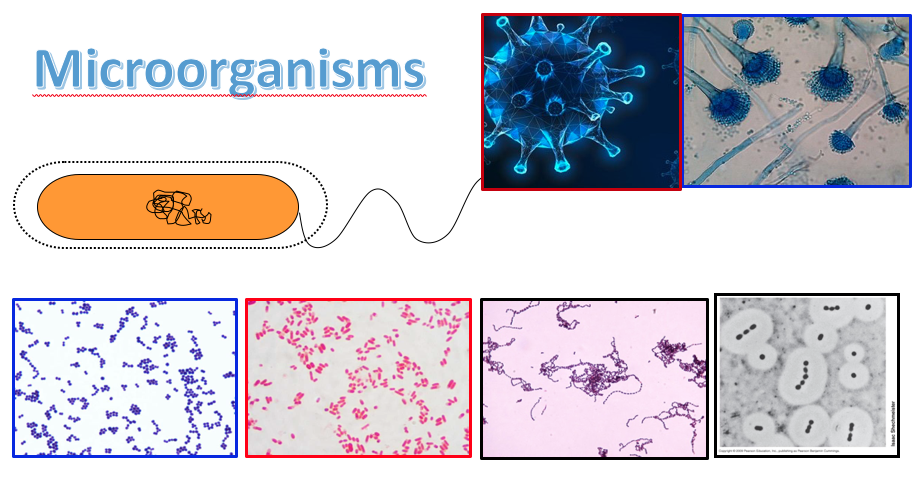
This module will introduce students to the theory and practice of the science of general microbiology through consideration of the diversity of structure, function, methods of genetic transfer and replication of DNA among microorganisms.
Infectious agents are major causes of human disease. This module will detail some of the infectious diseases that remain a major problem despite many advances in prevention and treatment. The module looks at some of the main types of infectious agents and how they cause the diseases they do. It details the theory and practice of hospital-based biomedical science.
Novel drug design, based on a detailed knowledge of the biochemical mechanism of the disease, has already made an important contribution in several cases. This module will discuss molecular mechanisms of infectious disease and how this is being combated.
Learning Outcomes:
To pass this module, students will need to be able to:
1. Define microbiology and demonstrate an understanding of the importance of micro-organisms in ecology, disease and industry;
2. Explain how micro-organisms are classified, describe the basic structure of bacteria and viruses, and describe the key differences between Prokaryotes and Eukaryotes;
3. Demonstrate understanding of the morphological, physiological and genetic diversity of
micro-organisms and their roles in the natural environment and in infectious disease;
4. Describe the structure of viruses and how they interact with cells in infected organisms;
5. Work effectively with micro-organisms in the laboratory, demonstrating in particular aseptic techniques, response to antibiotics, staining and examination under the microscope;
6. Give an understanding of the diagnosis of viral disease;
7. Provide an overview of control of hospital-acquired infections;
8. Examine the transmission of disease including food-bourne infections;
9. Examine systemic infections and causes of Pyrexia of Unknown Origin;
10. Provide an overview of Protozoa;
11. Describe the social impact and mechanisms associated with diseases caused by infectious agents (viruses, bacteria, protozoans, fungi, prions), and inflammatory disorders;
12. Discuss the drugs used to treat these diseases, including their mechanism of action, efficacy, side effects and toxicity;
13. Demonstrate competence in written communication and data analysis and interpretation.
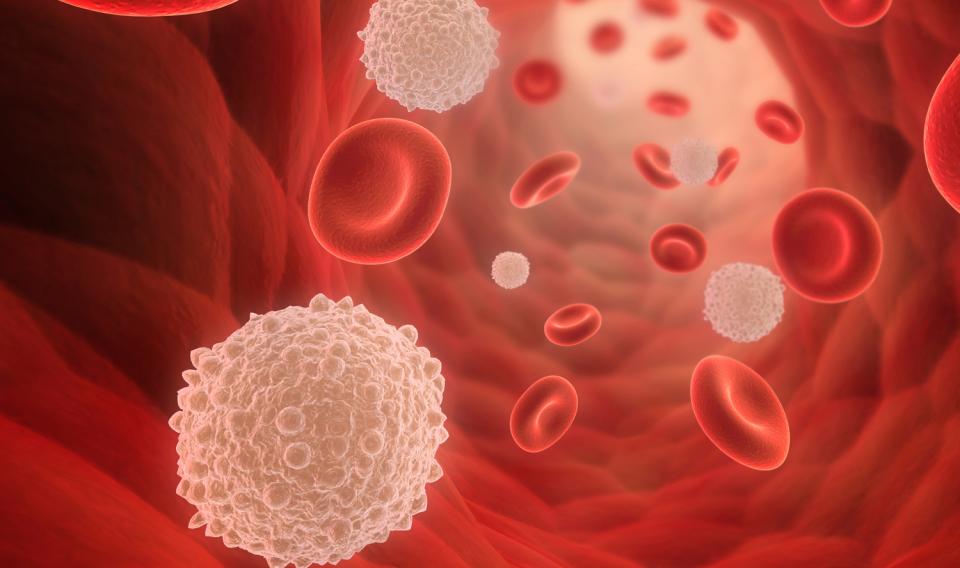
The first part of this module addresses key aspects of biochemistry and cell biology that underpin the science of haematology. Consideration will be given to how inherent or acquired abnormalities in genes, proteins and cells lead to diseases of the blood. There will also be a discussion of the emerging need for blood substitutes and current research in the area. The second part of the course deals with the practice of haematology in NHS laboratories. A range of diagnoses that are enabled through the analysis of blood will be explored, including haemoglobinopathies, coagulation disorders and leukaemia. The practicalities and limitations of blood transfusion will also be discussed.
Learning outcomes:
At the end of this module students will be able to:
1. explain key aspects of the science of haematology;
2. describe the underpinning biochemistry and molecular basis of haematological disorders;
3. explain the use and interpretation of haemoglobin electrophoresis and associated tests to detect abnormal haemoglobin;
4. describe the clinical importance of blood group markers and serological techniques in blood transfusion;
5. discuss the need for and development of blood substitutes;
6. explain the role of the National Blood Service;
7. describe the clinical applications of haematological techniques in diagnosing malignant and autoimmune disease;
8. demonstrate practical skills relevant to clinical haematology.
This course will first consider the mechanisms and kinetics of hydrolytic enzymes. Methods for protein analysis and purification will then be described, leading to a discussion of the use of recombinant DNA technology in the large scale production of proteins in the laboratory. The second part of the course involves study of the importance of lipids, carbohydrates and hormones in health and the diagnosis of disease. The use of antigens and metabolites as markers of disease will also be discussed.
Learning outcomes:
At the end of this module students will be able to:
1. describe methods for protein purification;
2. describe the turnover of enzymes both mechanistically and kinetically;
3. perform calculations to quantify enzymatic activities;
4. describe the clinical importance of the metabolism of calcium and lipids;
5. discuss the functions of the liver and kidney and describe the biology of diseases that affect these organs;
6. discuss the use of therapeutic drug monitoring in Biomedical Science;
7. perform biochemical assays in the laboratory.
- Module Supervisor: Paul Dobbin
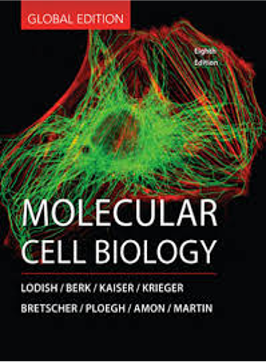
The aim of this module is to provide a detailed view of human cell structure and function as a basis to explore the principles of cellular pathology. We begin with the ultrastructure of the nucleus before reviewing the role of the cytoskeleton in cellular and subcellular movement and in the determination of cell shape. We will also look at how cells communicate and explore the range of cytoplasmic signal transduction pathways. The regulation of cell division and cell death is critical for the normal development of multicellular organisms and for tissue maintenance in the adult and the loss of regulation of these processes ultimately leads to cancer. The second half of the course will focus on the cellular changes that result in cancer development, and will examine a variety of different cancers, including breast, cervical, colorectal and lymphomas. This will include diagnosis, prognosis, ethics of screening and regulations involving collection and storage of tissue samples.
Learning outcomes:
At the end of this module students will need to be able to:
1. explain the structural organisation of the nucleus and the role of nuclear and chromosomal organisation in gene expression and cell division;
2. describe the molecular composition of the cytoskeleton and show how it influences cell shape, cell movement and cell-cell interactions;
3. describe how cells integrate endogenous messages and signals from the environment to regulate growth, proliferation and cell death in normal and pathological conditions;
4. explain the principles and practice of histological screening, with an emphasis on changes observed in pathological conditions and diagnosis;
5. carry out a range of laboratory procedures used to study normal and abnormal cells and tissues.

The activities of humans are resulting in an accelerating rate of extinction of biodiversity. Many species in the tropics are becoming extinct even before they have been described by science, while many more are threatened worldwide, including in the UK. This module will consider the need for biodiversity conservation and how this relates to environmental law and policy. Methods (theoretical and practical) for selecting both marine and terrestrial protected areas will be discussed. Habitat disturbance and/or loss along with other threats to biodiversity will be considered including global climate and ecosystem change.
Learning outcomes:
To pass this module students will need to be able to:
1. discuss the value of biodiversity and ecosystem services;
2. discuss the key issues affecting the health of rivers and streams in the UK;
3. discuss environmental legislation in the context or marine and terrestrial habitats;
4. explain the theoretical and practical methods for the selection and management of marine and terrestrial protected areas for conservation;
5. discuss the history and current roles of the modern day zoo;
6. develop key skills in reading and evaluating scientific papers, information retrieval, essay writing and independent learning;
7. demonstrate competence in written communication and data analysis and interpretation.
- Module Supervisor: Thomas Cameron

This module will introduce some key topics in marine biodiversity including methods of assessing marine biodiversity, distribution of species in space and time, maintenance of marine biodiversity, and regulation of populations. The module also introduces key marine taxa. Selected examples will focus on adaptations in planktonic organisms, biodiversity hot-spots such as coral reefs and explore disturbance and succession. The self learning component investigates the utility of nucleotide databases for reference RNA and environmental metagenomes in biodiversity research. Two practicals will examine the biodiversity in muddy and sandy shores, and the morphological and genetic diversity in marine amphipods.
Learning Outcomes (including lectures and practicals)
To pass this module students will need to be able to:
1. describe the key methods in assessing marine biodiversity
2. explain the patterns of diversity in marine systems, considering gradients of diversity on global scales, with depth in the oceans and through evolutionary time;
3. explain the mechanisms that generate and maintain patterns of diversity
4. show competence in retrieving relevant information from diverse sources, interpreting scientific data and demonstrate ability to organize and execute a self-learning task;
5. plan, write and give clear, effective, well timed oral presentations;
6. demonstrate competence in written communication and information retrieval;
7. demonstrate competence in data presentation, analysis and interpretation, numeracy, information retrieval and written communication.
- Module Supervisor: Boyd McKew
Learning Outcomes (including lectures and practicals)
To pass this module, you will need to be able to:
1. show that you understand how the physico-chemical environment influences growth and survival of microorganisms;
2. describe the mechanisms of adaptation to life in extreme environments;
3. show an understanding of the taxonomy of microbes and how it relates to their function;
4. show an understanding of the diverse ways by which microbes obtain energy;
5. describe the diverse ways in which microbes can be used in environmental, agricultural and industrial processes to: clean up contaminated land, recover metals, enhance oil production, produce biofuels and therapeutic compounds;
6. describe a range of methods used to assess and access microbial diversity;
7. manipulate microbes, and identify them using molecular biological methods;
8. read and analyse scientific papers, and understand and manipulate data.

The aim of the module is to provide an understanding of the importance of marine vertebrates to aquatic systems. The module also aims to provide knowledge of the taxonomy, physiology, ecology and conservation of the main aquatic vertebrates groups.
Marine mammals are very well adapted to an aquatic existence and are important components of aquatic food webs; they are often top predators and/or keystone species. They have huge conservation, environmental and economic value, that cannot be underestimated when considering the importance of this group of animals to aquatic systems in general. This module will introduce you to the main marine vertebrates. Specifically the module will describe major taxonomic divisions and the evolutionary relationships between different taxa. Much attention will be given to the fundamental biology, ecology and conservation of the main groups focusing heavily on marine cetacea (whales and dolphins). As well as the cetacea, other key groups examined during this module include marine Teleosts, Elasmobranchs, Sirenia, Carnivora , Marine turtles and Sea snakes. The module will include a field practical examining fish utilisation of salt marsh habitats. The module will conclude by examining the key threats to sleeted aquatic vertebrates and key conservation mechanisms and initiatives.
Learning Outcomes (including lectures and practicals)
To pass this module, you will need to be able to:
1. describe the taxonomic diversity, biology and ecology of aquatic vertebrates;
2. demonstrate an understanding of factors adversely affecting aquatic vertebrate diversity and population sizes;
3. discuss the environmental and economic value of aquatic vertebrates and to know conservation strategies;
4. explain functional and physiological aspects of fishes including buoyancy, osmoregulation and excretion, respiration and circulation, defence, immunity and fish vaccination;
5. understand the importance of salt marsh as a resource for fish communities;
6. demonstrate competence in data presentation, analysis and interpretation, numeracy, information retrieval and written communication;
7. show competence in gathering scientific information, particularly from the web, in reading and analysis of simple scientific reviews and data within them, and in communication skill.

This module is intended to introduce you to the biology and ecology of tropical coral reef systems. Coral reefs often dominate shallow inshore waters and are the most diverse of all marine habitats. Tropical reef systems also support the livelihoods of many millions of people. Reef systems are therefore exceptionally important in terms of global biodiversity and food and economic security. Coral reefs are increasingly over exploited and are also at risk from environmental change. Coral reefs do not exist in isolation and are connected to other tropical biomes. These biomes include sea grass beds and mangrove systems. Knowledge concerning the nature of this connection is key to understanding the ecological functioning of coral reef systems. Coral reefs are ecologically complex systems and provide the perfect case study to discuss ecological theory and the management of ecological systems. This module will provide you with knowledge of the biology of coral reef systems, the landscape ecology of tropical coastal marine systems, the importance of and threats to these systems and options for management.
Learning outcomes:
To pass this module students will need to be able to:
1. demonstrate knowledge of the biology of tropical reef forming corals
2. describe the ecological and socio-economic importance of tropical coral reefs
3. discuss the diversity of coral reef communities over local and regional scales
4. demonstrate knowledge of coral reef assessment and monitoring techniques
5. discuss major coral reef conservation and management strategies
6. demonstrate an ability to physiological assessment of reef building corals and in analysing and interpreting data
7. show competence in gathering scientific information, particularly from the web, in reading and analysis of simple scientific reviews and data within them, and in communication skill
- Module Supervisor: David Smith

Coral reef systems provide food and a source of income for more than half billion people worldwide and are amongst the most biodiverse systems on the planet. Despite their global significance and universal recognition of their importance in terms of both food and economic security, the majority of coral reefs around the world are overexploited, threatened by multiple anthropogenic stressors and are in need of protection through appropriate management. This module will introduce you to the key practical skills required by coral reef biologists whilst also providing you with training in scuba diving, species identification, and scuba and snorkel based assessment and monitoring techniques. A major objective of the field module is to provide you with training in how to design, implement and report scientifically robust underwater research. Coral reef research requires advanced in-water skills and as part of this course, students participating in diving, will be provided with the opportunity to undertake a speciality course that aims to develop key diving skills with successful participants being awarded a Coral Reef Research diver certification from the Profession Association of Diving Instructors (PADI). This module therefore aims to develop practical skills in coral reef monitoring, assessment and research. The module operates at the end of the spring term (2nd year) on the remote coral island of Hoga, within the Wakatobi Marine National Park, south-east Sulawesi, Indonesia. The module will be mostly practical based but will also include theory lectures, workshops and feedback sessions.
Learning Outcomes:
To pass this module students will need to be able to:
1. demonstrate proficiency in safe diving or snorkel based practices;
2. identify the major groups and common species of tropical marine organisms;
3. demonstrate practical skills in coral reef assessment and monitoring;
4. demonstrate skills in research design, implementation and reporting;
5. show competence in team work, data analysis and presentation skills.
- Module Supervisor: Boyd McKew

Gaining fundamental academic knowledge is a major goal for the individual modules of your degree; however, in order to apply this knowledge into your future career path requires that students effectively communicate this knowledge and importantly identify the “transferable skills” to maximise employability. This module therefore aims to develop and nurture a number of key transferable skills such as communication, team working, numeracy and attention to detail. A series of classes will introduce and apply data analysis and interpretation techniques (focussing on DAI and report writing skills utilising large data sets collected during the respective field courses, BS213/BS215), but also engagement into contemporary environmental issues relevant to your degrees (which will be delivered through student led learning discussion sessions). Students will also focus on identifying specific career options and the skills, qualities and aptitudes required, planning a career path, understanding the job application process and developing CV and cover letter writing skills.
Learning outcomes:
To pass this module students will need to be able to:
1. Demonstrate competence in career planning and job application skills, including CV and cover letter writing
2. Demonstrate an advanced understanding of the literature in a field relevant to a specific career path.
3. Demonstrate engagement with the career planning process.
4. Develop a career action plan and identify personal development needs.
5. Develop key skills in reading and evaluating scientific papers, information retrieval, SPF writing and independent learning.
6. Demonstrate competence in oral and written communication and data analysis and interpretation, along with experience working in different roles within a team.
- Module Supervisor: Thomas Cameron
- Module Supervisor: Natalie Hicks
- Module Supervisor: Eoin O'Gorman
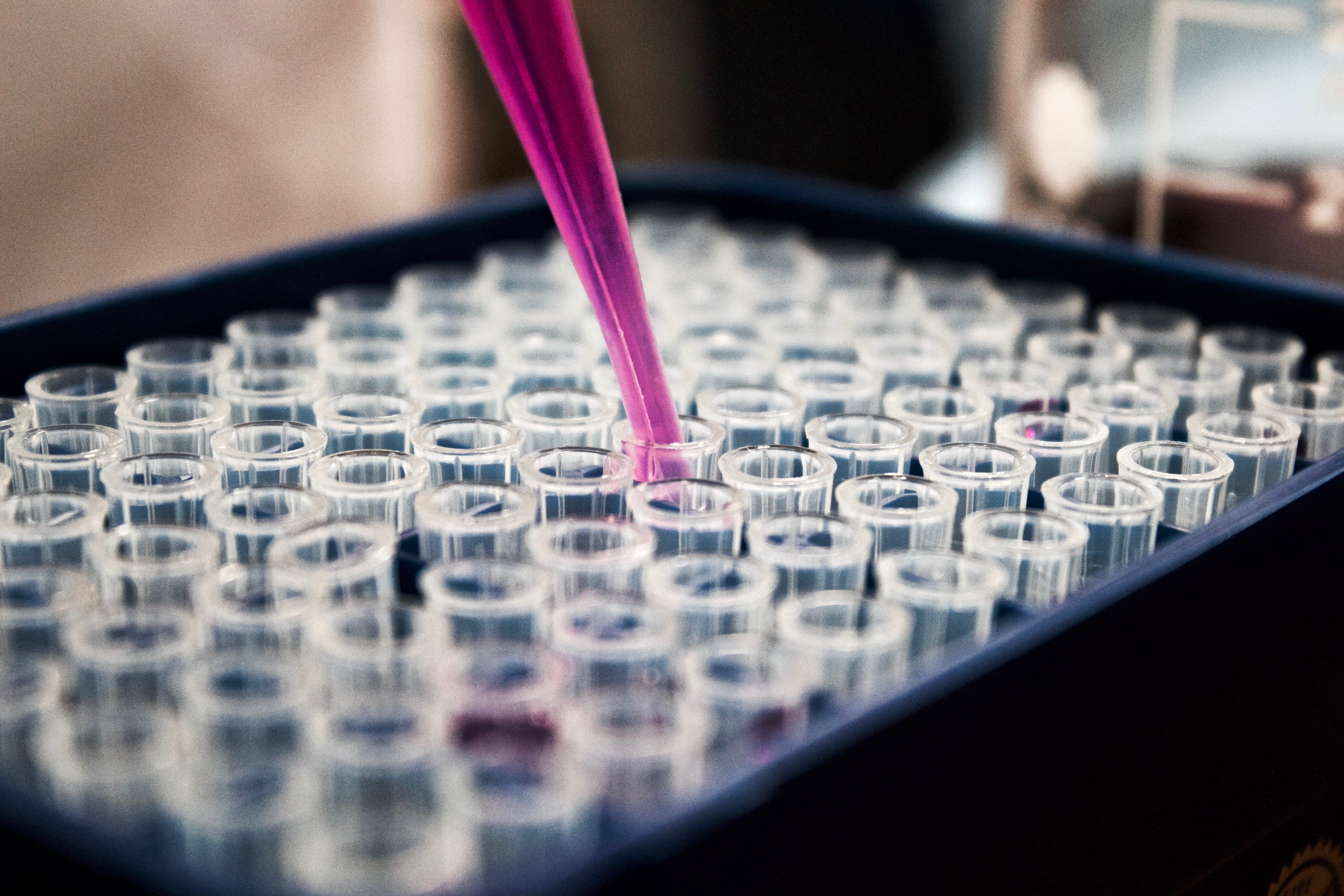
- Module Supervisor: Aurelie Villedieu

- Module Supervisor: Mike Hough
